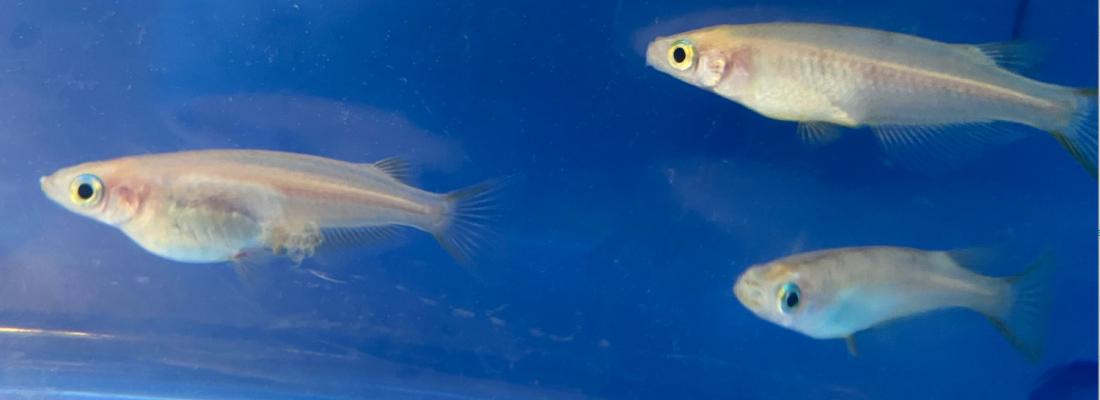Biodiversity Reading time 6 min
Neurodevelopmental disorder genes expressed in the mother’s oocyte shape progeny neurodevelopment and behavior
Published on 21 May 2025

Animals are sensitive to their environment, and parental exposure to various factors is likely to influence the behaviour of their offspring, as shown by numerous data in humans and various animal models, as well as studies in natural environments. While these effects have been well documented overall, very little is known about the mechanisms of intergenerational transmission, even though it is known that they are non-genetic in nature (i.e. do not involve modification of the DNA sequence transmitted by the parents). In rainbow trout, it is known that maternal exposure to high temperatures induces behavioural changes in the offspring. Surprisingly, researchers at INRAE's Fish Physiology and Genomics Laboratory in Rennes observed that these intergenerational effects were associated with a drop in expression levels, in the mother's oocytes, of genes known in humans to be responsible for neurodevelopmental disorders. These include the auts2 gene, responsible for a syndrome characterised by intellectual disability and behavioural disorders. The researchers wanted to test the hypothesis that genes responsible for neurodevelopmental disorders expressed in the mother's oocyte would shape the behaviour of the offspring.
To do this, they used medaka, a model fish species widely used in research; they combined genome editing approaches in the mother with detailed exploration of the behaviour of the offspring using automatic video analysis, at both the larval and adult stages. The effects on neurodevelopment were revealed by analysis of the transcriptome (repertoire of expressed genes) in different cell populations, particularly neural populations.
This study shows that suppressing expression of the auts2 gene in the mother has an impact on both the neurodevelopment and behaviour of her offspring. More specifically, individuals born to mothers who no longer express the auts2 gene show less anxious behaviour, but appear to have reduced ability to recognise their environment. The researchers were also able to observe that the auts2 gene was not a unique case, but rather belonged to a group of around a hundred genes responsible for neurodevelopmental disorders, and whose expression in the mother's oocyte appears to be proven, although little known, in both fish and humans. Overall, these results raise questions about the role of the expression of genes responsible for neurodevelopmental disorders in the oocyte, particularly in the intergenerational control of neurodevelopment and behaviour, whether in humans or in farmed or wild animals in response to stress, particularly environmental stress.
This work, carried out by the Sex, Ovogenesis and Behaviour team at INRAE's Fish Physiology and Genomics Institute in Rennes and coordinated by Julien Bobe, was carried out in collaboration with the neuroscience department at the University of Geneva.
Reference: Clément, A.E., Merdrignac, C., Puiggros, S.R., Sévère, D., Brionne, A., Lafond, T., Nguyen, T., Montfort, J., Guyomar, C., Dauvé, A., Herpin, A., Jabaudon, D., Colson, V., Murat, F., Bobe, J., 2025. Parent-of-origin regulation by maternal auts2 shapes neurodevelopment and behavior in fish. Genome Biol. 26, 125. https://doi.org/10.1186/s13059-025-03600-y
